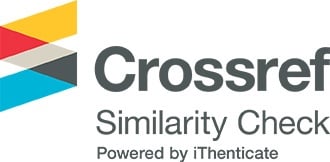Balancing tradition and innovation: The impacts of AI on university students' language learning journey
Các tác giả
DOI: https://doi.org/10.59294/HIUJS2025034Từ khóa:
Artificial Intelligence (AI), OpenAI: ChatGPT, Microsoft Copilot, Google Gemini, learning languages, traditional and innovationTóm tắt
This article examines traditional language learning methods within the context of AI's growing influence. It acknowledges the challenges students face in learning new languages and explores AI tools, such as ChatGPT, highlighting both their opportunities and challenges. While the benefits of AI, such as personalized feedback, are highlighted, a deeper critique of potential drawbacks, such as oversimplification and reduced interaction, is necessary. The article calls for a balance between AI and traditional methods, suggesting that AI should complement, not replace, traditional teaching methods to strengthen the argument.
Abstract
This article examines traditional language learning methods within the context of AI's growing influence. It acknowledges the challenges students face in learning new languages and explores AI tools, such as ChatGPT, highlighting both their opportunities and challenges. While the benefits of AI, such as personalized feedback, are highlighted, a deeper critique of potential drawbacks, such as oversimplification and reduced interaction, is necessary. The article calls for a balance between AI and traditional methods, suggesting that AI should complement, not replace, traditional teaching methods to strengthen the argument.
Tài liệu tham khảo
[1] S. Boguslawski, R. Deer, and M. G. Dawson, “Programming education and learner motivation in the age of generative AI: Student and educator perspectives,” CODE University of Applied Sciences, Berlin, Germany, 2024.
DOI: https://doi.org/10.1108/ILS-10-2023-0163[2] A. Smith and B. Johnson, “Artificial Intelligence in Education: Personalized and Adaptive Learning Experiences,” Journal of Educational Technology, vol. 45, no. 3, pp. 201–218, 2020.
[3] C. Anderson and D. Davis, “Paradigm Shift in Higher Education Learning: Insights from OpenAI's Technologies,” Higher Learning Journal, vol. 32, no. 2, pp. 56-73, 2019.
[4] E. Garcia and F. Martinez, “ChatGPT: A Virtual Language Tutor Harnessing Natural Language Processing,” Language Learning and Technology, vol. 25, no. 1, pp. 45-63, 2018.
[5] G. Thompson and H. White, “AI-Powered Language Learning Platforms in Universities: Customization and Proficiency Enhancement,” Journal of Applied Linguistics, vol. 38, no. 4, pp. 127-142, 2021.
[6] R. Brown and S. Lee, “Fusion of Technology and Pedagogy: AI in Digital Language Learning,” Educational Technology Quarterly, vol. 20, no. 3, pp. 89-105, 2017.
[7] I. Hidayat-ur-Rehman, “Examining AI competence, chatbot use and perceived autonomy as drivers of students' engagement in informal digital learning,” MIS Department, Faculty of Business Administration, University of Tabuk, Tabuk, Saudi Arabia, 2024.
DOI: https://doi.org/10.1108/JRIT-05-2024-0136[8] A. Ellikkal and S. Rajamohan, “AI-enabled personalized learning: Empowering management students for improving engagement and academic performance,” Alagappa Institute of Management, Alagappa University, Karaikudi, India, 2024.
DOI: https://doi.org/10.1108/XJM-02-2024-0023[9] R. Leelavathi and R. C. Surendhranatha, “ChatGPT in the classroom: Navigating the generative AI wave in management education,” Department of Management, Kristu Jayanti College, Bangalore, India, 2024.
DOI: https://doi.org/10.1108/JRIT-01-2024-0017[10] A. Kumar, A. Kumar, S. Bhoyar, and A. K. Mishra, “Does ChatGPT foster academic misconduct in the future?” Rushford Business School, Lucerne; Subedar Rajdevi Memorial Business School, Lucknow, India, 2024.
DOI: https://doi.org/10.1108/PAP-05-2023-0061Tải xuống
Tải xuống: 68











